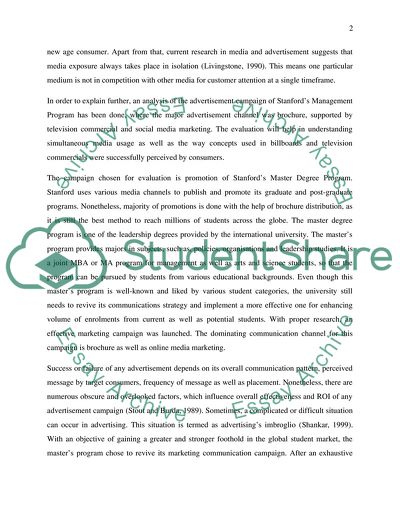Cite this document
(“Advertisement Campaign of Stanfords Master Program Essay - 1”, n.d.)
Advertisement Campaign of Stanfords Master Program Essay - 1. Retrieved from https://studentshare.org/marketing/1629683-critically-evaluate-an-artefact-of-a-marketing-communications-campaign-advertisement-brochure-poster-etc-for-either-a-graduate-traineeship-or-a-masters-degree
Advertisement Campaign of Stanfords Master Program Essay - 1. Retrieved from https://studentshare.org/marketing/1629683-critically-evaluate-an-artefact-of-a-marketing-communications-campaign-advertisement-brochure-poster-etc-for-either-a-graduate-traineeship-or-a-masters-degree
(Advertisement Campaign of Stanfords Master Program Essay - 1)
Advertisement Campaign of Stanfords Master Program Essay - 1. https://studentshare.org/marketing/1629683-critically-evaluate-an-artefact-of-a-marketing-communications-campaign-advertisement-brochure-poster-etc-for-either-a-graduate-traineeship-or-a-masters-degree.
Advertisement Campaign of Stanfords Master Program Essay - 1. https://studentshare.org/marketing/1629683-critically-evaluate-an-artefact-of-a-marketing-communications-campaign-advertisement-brochure-poster-etc-for-either-a-graduate-traineeship-or-a-masters-degree.
“Advertisement Campaign of Stanfords Master Program Essay - 1”, n.d. https://studentshare.org/marketing/1629683-critically-evaluate-an-artefact-of-a-marketing-communications-campaign-advertisement-brochure-poster-etc-for-either-a-graduate-traineeship-or-a-masters-degree.


